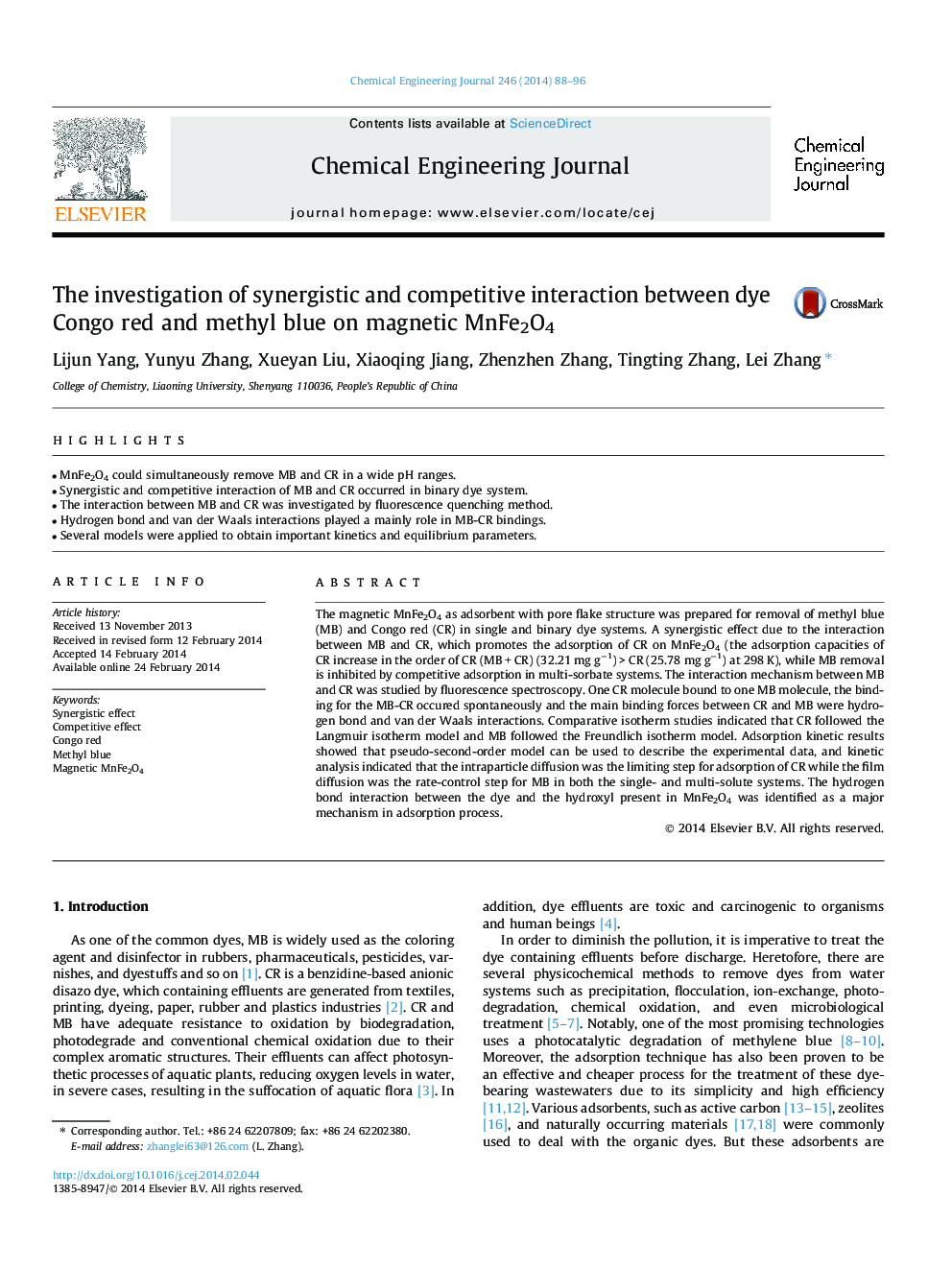| Article ID | Journal | Published Year | Pages | File Type |
|---|---|---|---|---|
| 147817 | Chemical Engineering Journal | 2014 | 9 Pages |
•MnFe2O4 could simultaneously remove MB and CR in a wide pH ranges.•Synergistic and competitive interaction of MB and CR occurred in binary dye system.•The interaction between MB and CR was investigated by fluorescence quenching method.•Hydrogen bond and van der Waals interactions played a mainly role in MB-CR bindings.•Several models were applied to obtain important kinetics and equilibrium parameters.
The magnetic MnFe2O4 as adsorbent with pore flake structure was prepared for removal of methyl blue (MB) and Congo red (CR) in single and binary dye systems. A synergistic effect due to the interaction between MB and CR, which promotes the adsorption of CR on MnFe2O4 (the adsorption capacities of CR increase in the order of CR (MB + CR) (32.21 mg g−1) > CR (25.78 mg g−1) at 298 K), while MB removal is inhibited by competitive adsorption in multi-sorbate systems. The interaction mechanism between MB and CR was studied by fluorescence spectroscopy. One CR molecule bound to one MB molecule, the binding for the MB-CR occured spontaneously and the main binding forces between CR and MB were hydrogen bond and van der Waals interactions. Comparative isotherm studies indicated that CR followed the Langmuir isotherm model and MB followed the Freundlich isotherm model. Adsorption kinetic results showed that pseudo-second-order model can be used to describe the experimental data, and kinetic analysis indicated that the intraparticle diffusion was the limiting step for adsorption of CR while the film diffusion was the rate-control step for MB in both the single- and multi-solute systems. The hydrogen bond interaction between the dye and the hydroxyl present in MnFe2O4 was identified as a major mechanism in adsorption process.
